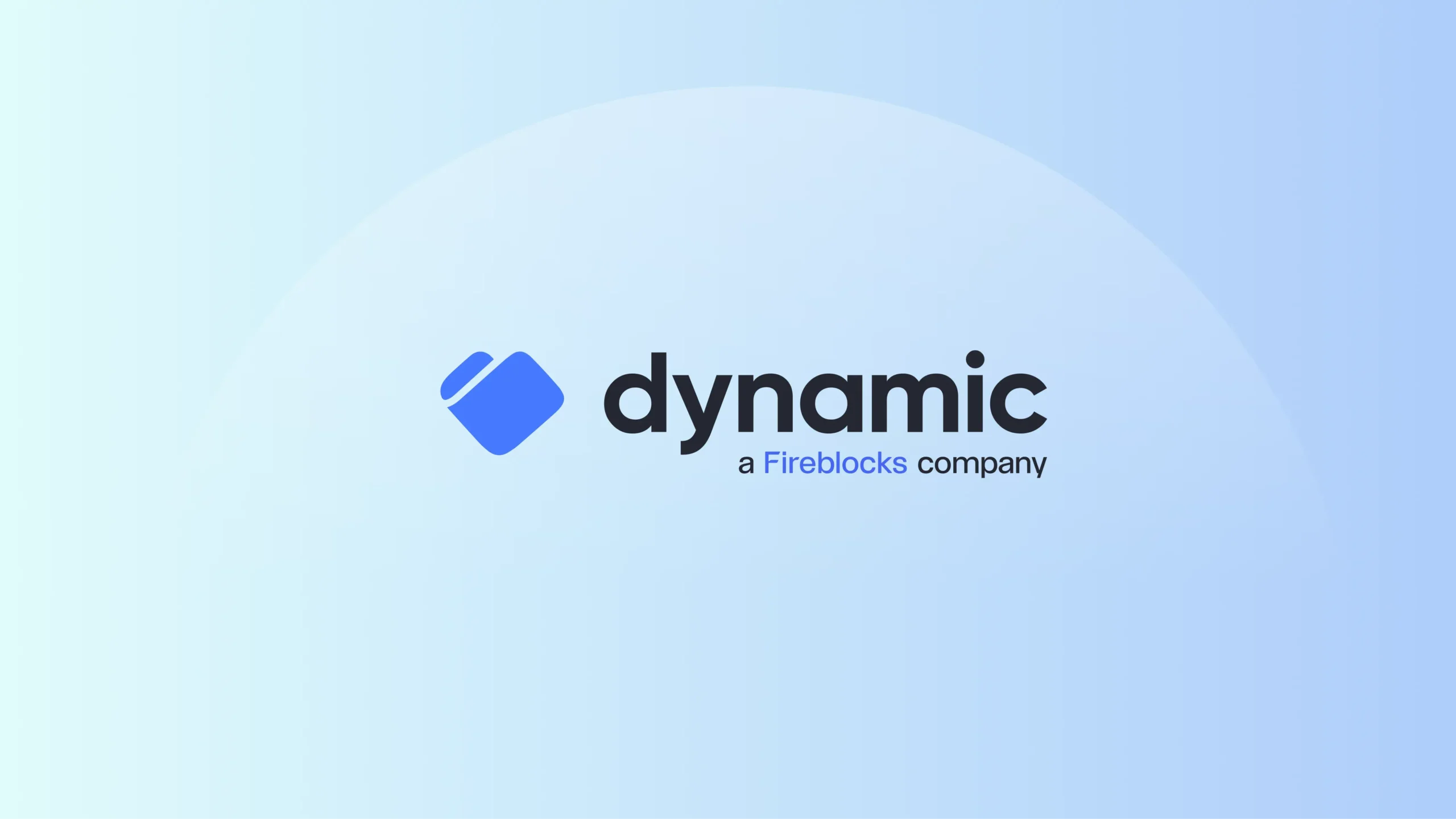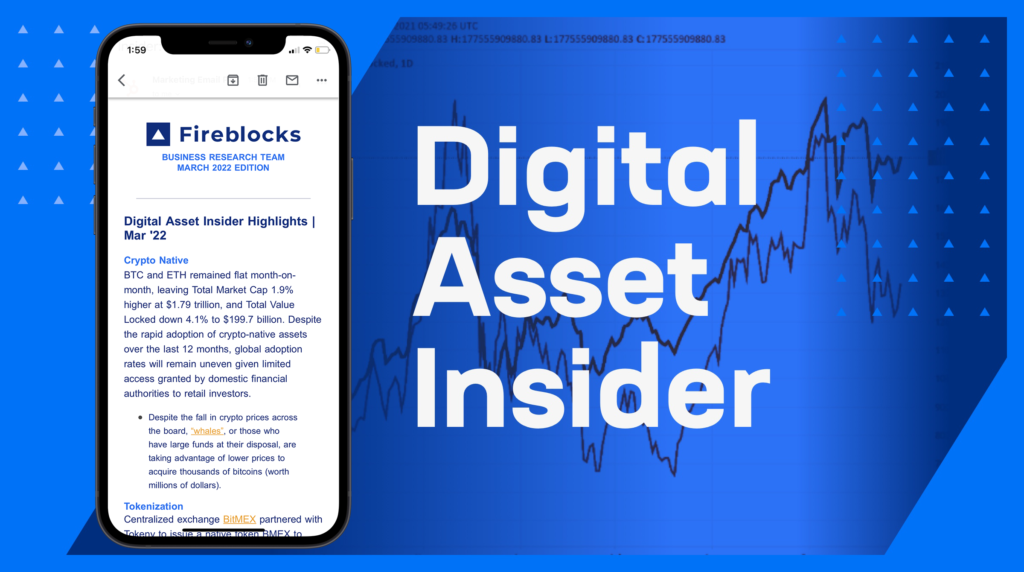Core digital asset markets ended relatively unchanged for the month. Regulators across the globe are pushing forward with legislation to govern the use of digital assets. We have launched Advisory Services to support firms looking to build their digital asset business. Core digital asset infrastructure is being acquired by traditional finance firms and digital-native firms alike to prepare for the wave of adoption ahead.
New to Digital Assets? Check out our Fireblocks Academy to get up to speed!
Crypto Native
Bitcoin and Ethereum remained flat month-on-month, leaving Total Market Cap 1.9% higher at $1.79 trillion, and Total Value Locked down 4.1% to $199.7 billion. Approvals for firms wishing to provide crypto-related services as regulated entities are being processed in the United Kingdom to eventually allow more investor access to digital assets. Despite the rapid adoption of crypto-native assets over the last 12 months, global adoption rates will remain uneven given limited access granted by domestic financial authorities to retail investors. However, moves by El Salvador and other like-minded countries to grow their bitcoin-fueled economy by issuing bonds to build digital asset infrastructure demonstrate alternative ways to gain exposure to cryptocurrencies via traditional financial assets.
- Uphold Europe Limited, a subsidiary of United States-based Uphold, has received regulatory approval from the United Kingdom’s Financial Conduct Authority (FCA), allowing it to provide crypto-related services to customers in the United Kingdom.
- Wells Fargo Investment Institute’s analyst report recognizes that cryptocurrencies have grown rapidly and experienced a “hyper-adoption phase”, drawing parallels to internet adoption in the 1990’s. The report explains why it is not too late to invest in cryptocurrencies, and caution readers to be both patient and prudent in their investment decisions.
- El Salvador’s bitcoin-backed bond, expected to be issued in March, has commitments of over $500 million from investors. The funds will be used to construct energy and bitcoin mining infrastructure.
Tokenization
We released our Tokenization Whitepaper, exploring use cases involving property, collectibles, and rights to resources. For equities, we do see them being tokenized eventually, but in the interim, a “wrapper” around existing shares as collateral would give access to digital asset investors. Alternatively, a new class of shares could be issued as a securities token directly on a blockchain. Interestingly enough, tokenization is being used to free tokens staked to generate additional return, termed “liquidity staking”. Using non-fungible tokens for encapsulating real estate property ownership is another form of tokenization that is gaining more attention, as more and more uses of the technology emerge to reduce transaction friction.
- Real-estate blockchain firm Propy facilitated the sale of a home in the state of Florida in the United States for $653,163 through the use of a non-fungible token (NFT), which was tied to the ownership rights of the home. The recognition of NFTs has grown through their acceptance as collateral for crypto-loans by crypto exchanges and lenders.
- The Intercontinental Exchange (ICE) has made a strategic investment in tZero, a digital asset marketplace where private security tokens, cryptocurrencies, and NFTs are traded. tZero listed one of the first securities tokens associated with a traditionally listed company, Overstock.
- Liquidity staking platform, Lido which supports Ether (ETH), Terra (LUNA) and Solana (SOL), is adding Kusama (KSM) liquid staking, and will allow KSM to be used by DeFi platforms to provide additional yield. Polygon is expected to be supported later in March. Liquid staking uses tokenization of the staked funds to unlock the underlying staked tokens for use elsewhere.
Regulation | Regulators
Regulation of digital assets is taking shape in various forms to enable greater financial inclusion; examples include threshold requirements for the reporting of crypto-transactions to tax authorities, the usage of digital assets, and the pursuit of Bitcoin as legal tender by countries other than El Salvador. A number of countries are seeking to attract crypto-firms and activities by streamlining regulations and creating crypto-friendly headquarters for firms.
- United States President Joe Biden, issued an executive order directing government agencies to examine digital assets covering a range of topics like regulation, oversight, consumer protections, financial stability, and the digital dollar. This milestone step will bring much needed clarity to how digital assets will operate within the U.S. and will have positive global implications, as certainty establishes.
- The Crypto Regulation Bill in Brazil to set rules governing the usage of digital currency funds, was approved by the Senate Economic Affairs Committee and is on its way to a vote on the Senate floor. Once approved by the Senate, the Bill will need to pass through the lower house for approval, with final sign-off by the Brazilian President.
- Mexican senator Indira Kempis, representing Nuevo León state, wants Bitcoin to be adopted as legal tender to drive financial inclusion, and is seeking to introduce a cryptocurrency bill based on El Salvador’s “Bitcoin Law”.
- U.S. Internal Revenue Service (IRS) will exempt crypto miners and stakers from IRS reporting rules that require reporting transactions with a value of $10,000 or more to the IRS, as they are not considered brokers.
- The United Arab Emirates (UAE) is establishing a crypto-friendly regulatory environment, which includes issuing licenses for virtual asset service providers (VASPs), providing rules for digital asset firms to set up in the country, and creating a regulated environment for crypto mining.
Payments | Settlement
The integration of digital payments platforms into core digital asset infrastructure is critical for the operation of a stable, efficient, and frictionless digital asset ecosystem. Both traditional payment service providers and emerging digital asset-based payment service providers, maintain their relevance by facilitating the smooth flow of digital assets demanded. This is achieved by finding ways to integrate into, or transition infrastructure being built into the digital asset ecosystem.
- First Digital, a stablecoin and digital asset payments technology platform, has been acquired by Fireblocks. This acquisition will enhance Fireblocks’ payments offering by allowing payment service providers and acquirers to accept payments and make payouts in digital currencies.
- Digital asset payments platform, Wirex, has enabled its users to access the Avalanche blockchain and tokens, as well as the Polygon blockchain to its non-custodial wallet and app. The London-based platform has 4.5 million customers across Europe and Asia Pacific, and expanded their offerings to the United States last month.
Decentralized Finance
Decentralized applications (dApps) especially on ethereum virtual machine (EVM) compatible chains, will see more interoperability benefits with the launch of more parachain projects on Polkadot/Kasuma, Cosmos, and bridges to Layer-2’s like Polygon. This will help increase total value locked (TVL) and expand the whole decentralized finance (DeFi) ecosystem. However, as blockchains fight it out for development on their chains through incentives, it could cause volatility in TVL in the initial stages of growth.
- Liquidity pool Curve Finance has integrated with Moonbeam, an Ethereum-compatible smart contract platform (also known as a parachain), under the Polkadot ecosystem. This will give the Polkadot ecosystem access to nearly $16 billion in Curve Finance’s liquidity pools. Polkadot’s parachains allow communication between different systems and is seen to be an enabler toward a decentralized Web3.
- First there were the Curve Wars, and now we are now seeing the Solidly Wars on the Fantom blockchain. There is a fight to be one of the Top 20 Total Value Locked dApps on Fantom in order to obtain a valuable non-fungible token (NFT) as a reward from Andre Cronje. The Solidly Wars will bring a level of TVL volatility to Fantom, a risk to take note of by DeFi participants and investors.
Centralized Finance
Centralized finance lender, Blockfi, has settled with the United States Securities and Exchange Commission (SEC) and thirty-two American states in its case surrounding unregistered securities. Traditional finance firms are acquiring the technology that will allow them to provide their clients access to digital assets.
- After months of regulatory pressure from state regulators in the United States and an investigation by the U.S. Securities and Exchange Commission (SEC) into Blockfi’s unregistered lending products, Blockfi has been ordered to pay $100 million in penalties in a settlement with the SEC and thirty-two American states.
- Singapore’s DBS Bank is set to offer digital asset trading to its retail clients, which until now has only been available to institutional investors through the DBS Digital Exchange. The format of the services is expected to be self-driven through an online portal.
- London Stock Exchange Group has acquired trading technology solution provider, TORA, which will allow customers of the exchange to access digital assets and the multi-asset capabilities of TORA’s trading solutions. Their trading solutions include an order and execution management system (OEMS) and portfolio management system (PMS).
Custody
Asset management firms are partnering with digital asset exchanges offering prime services to enable their wealthy clients access to separately managed accounts. Digital asset custodians are taking advantage of assets under custody to offer staking services.
- One River Asset Management is partnering with Coinbase Prime to offer a separately managed account (SMA) platform that will enable financial advisors the ability to manage digital assets for their clients.
- Komainu’s institutional clients are able to accrue returns from assets custodied through Komainu Yield, a staking service which generates returns on staked assets held in custody with the firm.
CBDCs
In 2020, collaboration between central banks on projects to test blockchain technologies used to issue, transfer and settle CBDCs, yielded mostly positive results. Behind the scenes, the need for legislation to allow CBDCs and other digital assets to be used is a clear agenda item for financial regulators and governing authorities to address. Clear regulations and guidelines will allow CBDCs to operate smoothly and with scale.
- Legislation for a digital euro is expected to be proposed in 2023, according to the European Commission (EC). A key driver for issuing a central bank digital currency (CBDC) is the concern that the popularity of cryptocurrencies will undermine fiat currencies, if they were to become the dominant mode for payments and transactions.
- Meanwhile, German-based think tank Digital Euro Association (DEA) announced a partnership with Ripple to jointly work on central bank digital currency (CBDC) solutions.
- At an event hosted by the Atlantic Council, Kristalina Georgieva, IMF Managing Director, spoke on the future of money and shared three lessons from central banks that experimented with CBDCs:
- There is no “one size fits all.”
- Financial stability and privacy considerations are paramount to the design of CBDCs.
- It is crucial to find balance between developments on the design of CBDCs and the policies around CBDCs.
ESG Impact
Governments are supporting projects focused on eligible green climate and environmental initiatives by issuing green bonds in order to meet emission targets committed to by 2030 and 2050. The crypto-mining industry is taking steps to source energy from greener sources and find ways to harness wasted energy emitted from their mining operations.
- Kryptovault is deploying ways to use the energy emitted by bitcoin miners in Norway to dry wood. Miners have also moved to locations offering green sources of energy to power their machines, like the state of Georgia in the United States.
- The Bank for International Settlements (BIS) launched the Asian Green Bond Fund, a green bond fund, for central banks to finance green projects in the Asia Pacific region. This brings the total green bond funds managed under such initiatives to $3.5 billion. Central banks from South Korea, Indonesia, the Philippines have announced their support for the fund.
- The Canadian government published its Green Bond Framework as it seeks to develop a sustainable finance market supporting the move to net-zero emissions by 2050. The government plans to issue $5 billion green bonds to fund investments focused on the climate and environment, which involve large-scale and capital-intensive infrastructure projects.
Crypto-Native Market Analytics
The first half of February saw Bitcoin reach prices around $45,000, but it failed to maintain momentum as risky assets came under pressure from growing concerns surrounding Russian military forces encroaching the border of Ukraine. February crypto-native markets traded within the prior month’s range, with many DeFi alternative coins (Altcoins) setting lower lows during the month. Both BTC and ETH ended the month with little change, and Altcoins ended lower between 8%-11%. All crypto-native markets trended lower in the second half of February after brief moves higher at the start of the month.
CHART OF THE MONTH: DeFi Chain Battles Part 2

Total Value Locked (TVL) for protocols BSC, Fantom and Solana, moved lower for most of February. However, Fantom TVL jumped upon the entrance of dApp Solidex ($2.2 billion TVL), which is one of the key players involved in what is being termed the “Solidly Wars”.
MONTHLY CHANGE

Altcoins closed modestly lower by between 8%-11% with BTC and ETH both ending flat.
TOP 10 MARKET CAPITALIZATION

BITCOIN [BTC]

Bitcoin tested the area around $45,000 on a number of days in February, fell after the middle of the month, moved towards the low set in January which held, and saw price rebound to end flat month-on-month. Interestingly, the start of March saw the price jump towards the $45,000 resistance area.
ETHEREUM [ETH]

Ethereum found resistance at $3,200, failed to make a break higher mid-month, and fell back towards support around $2,400 before closing the month flat.
BITCOIN : STOCK TO FLOW RATIO [BTC:STFR]

BTC is lower than STFR, indicating it is undervalued.
BTC: ALL EXCHANGES NETFLOW

There were only 3 days in February that saw net inflows into exchanges with BTC price range bound.
REGIONAL BTC FLOWS [Last 7 Day Average, Mar 2]

Regional flows within Eastern Asia and North America held over $150 million, which was lower than seen in the prior month where flows were above $200 million in these regions.
There were higher flows from a percentage change perspective in Western Europe and Rest of World, but still lower than what had been seen in 2021.
Assets typically flow within a region, likely due to preferences for local exchanges, but flows between regions often occur as a result of regulatory concerns, geopolitical changes, or significant market price variations.
TOTAL VALUE LOCKED [TVL, Feb 28]

TVL rose $7.8 billion (4%) to $199.7 billion, with ETH ending flat month-on-month.
PROTOCOL POSITION [TVL, Feb 28]

Total value locked (TVL) for Avalanche increased $2.25 billion attributed to dApps like Aave $0.68 billion, Platypus Finance $0.38 billion and Trader Joe $0.33 billion.
DEFI PULSE INDEX [DPI]

Top 5 Tokens: Uniswap, Aave, Maker, Loopring and Synthetix.
Index information can be found at the Tokensets.com.
This reCap is distributed for general informational and educational purposes only and is not intended to constitute legal, tax, accounting, or investment advice. For other important disclosures.


